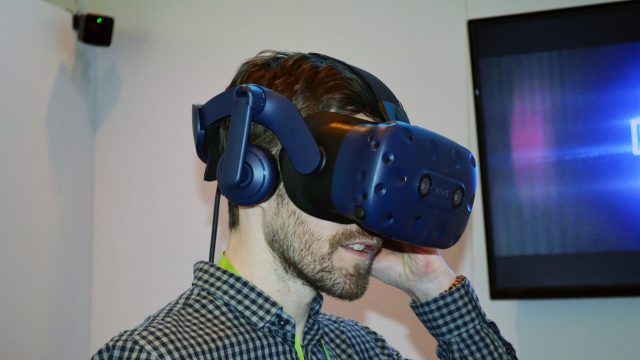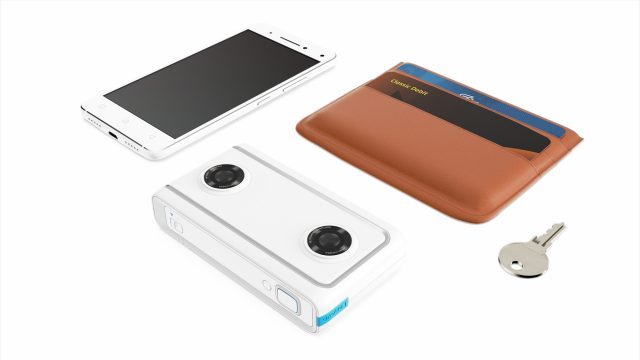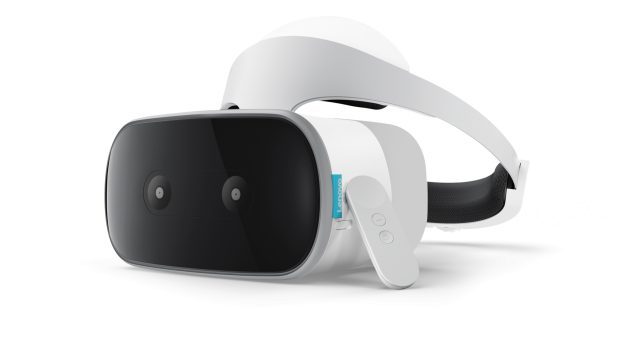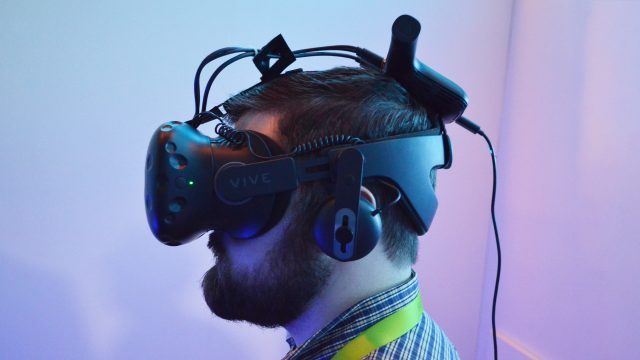Following many announcements on ‘day zero’ of CES, we’ve rounded up some of the most important bits from ‘day 1’ of our CES 2018 coverage: hands-on with the Vive Pro, Google introduces new VR180 cameras, Lenovo Mirage Solo detailed, and HTC’s official wireless adapter for Vive and Vive Pro.
Hands-on with the Vive Pro

Read our detailed hands-on impressions of HTC’s new flagship VR headset. The headline figure is the higher 2880×1600 resolution, but the Pro features several notable improvements to the standard design: a new strap system with integrated headphones that improves on the optional Deluxe Audio Strap, various ergonomic and ease-of-use adjustments, dual front-facing cameras, and support for Steam VR Tracking 2.0.
Google introduces ‘VR180’ 3D consumer cameras

Google unveiled a pair of point-and-shoot stereoscopic 180° cameras from Lenovo and YI Technology coming in the spring. A third VR180 camera from LG is due later in the year. Half-spherical image and video content is a growing market, as it offers some advantages over fully spherical capture. 180° capture tends to produce higher quality results at lower data rates, and users are familiar with being able to choose their shooting angle.
Standalone Daydream headset from Lenovo

Due to launch in Q2 2018, the Lenovo Mirage Solo is the first standalone headset designed for Google’s Daydream VR platform. Featuring a 110° field of view and a 2560×1440, 75Hz display, the Mirage Solo is positioning itself at the high end of mobile VR, with Google’s Clay Bavor describing it as “the most immersive way to access Daydream.” Perhaps most significantly, it also introduces WorldSense, Google’s SLAM-based, self-contained 6DoF tracking system, which claims to enable “PC-quality positional tracking.”
HTC’s Official Wireless Adaptor

The official Wireless Adaptor for Vive is an optional accessory coming in the summer that cuts the cord on high-end VR. Revealed at HTC’s press event, the device will support both the Vive and Vive Pro systems. According to the press release, the adaptor will be “the first to market with a truly wireless VR headset integration for both Vive and Vive Pro.” The system uses 60GHz Intel WiGig technology and the DisplayLink XR codec.
– – — – –
Check back tomorrow for our ‘day two’ round-up off all things augmented and virtual at this year’s CES.







